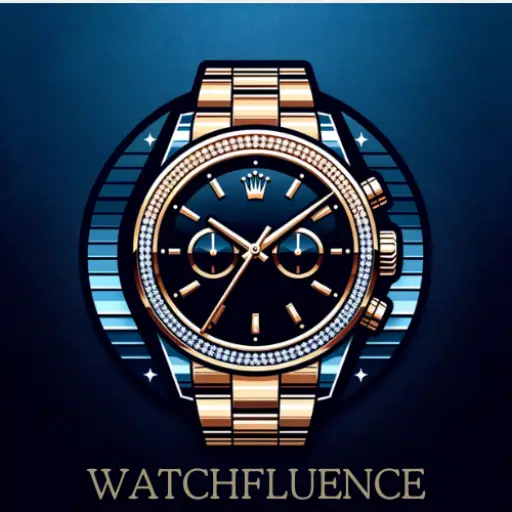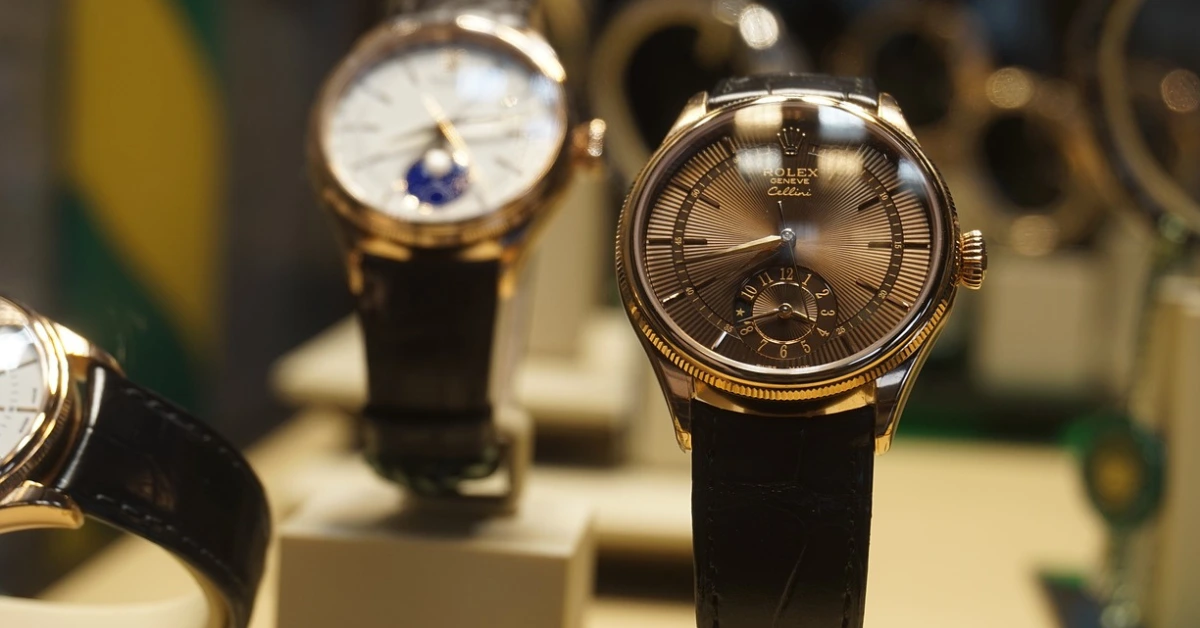Exploring the world of watches is like diving into a sea of artistry and precision. We often encounter a seemingly endless array of watch brands, each vying for our attention with promises of luxury, elegance, and innovation. Just as in any industry, watch brands fall into a certain hierarchy, creating a spectrum that ranges from accessible and functional timepieces to those embodying the pinnacle of craftsmanship and exclusivity. This hierarchy is know as the watch brand hierarchy.
History and Heritage of Watchmaking
In our exploration of watch brands, it’s essential we appreciate their rich history and the deep heritage that underpins the industry, particularly the stories behind esteemed brands like Omega, Rolex, and Patek Philippe.
Evolution of Timekeeping Devices
Timekeeping began with rudimentary devices such as sundials and hourglasses. The quest for accuracy led to mechanical contraptions, and by the 16th century, portable spring-driven clocks paved the way for the watchmaking revolution. Precision in timekeeping evolved in leaps and bounds, leading to the sophisticated mechanisms that tick in the masterpieces by Omega and Rolex. The chronometer, a vital breakthrough ensuring maritime precision, was a milestone that some of these brands, like Omega, championed as early as the 20th century.
Iconic Brands and Their Legacies
- Patek Philippe: Since 1839, Patek Philippe has been synonymous with technical prowess and intricate designs, a beacon of craftsmanship and innovation.
- Rolex: With its inception in 1905, Rolex quickly ascended as a leader in durability and precision, often associated with pioneering feats, such as the first waterproof wristwatch, the Oyster.
- Omega: Omega’s legacy includes timing Olympic Games and partaking in space missions, signifying its status as a brand of historical significance.
- Vacheron Constantin: Established in 1755, Vacheron Constantin is one of the oldest manufacturers with uninterrupted activity, known for its detailed finishing and complex timepieces.
- Cartier: Cartier, founded in 1847, not only crafted watches but also sculpted a reputation as a jeweler, creating timepieces that are both functional and artistic.
- Audemars Piguet: Since 1875, Audemars Piguet has pushed the boundaries in watchmaking, with the Royal Oak being a notable contribution to the luxury sports watch segment.
Understanding Watch Tiers

These tiers help us determine where a brand stands in terms of luxury and demand.
Categories of Luxury Watches
Luxury watches are often classified into several broad categories, each representing a distinct level of craftsmanship, heritage, and price point. Here’s a simplified breakdown:
- Entry-Level Luxury: Brands in this range offer quality craftsmanship and are a first step into luxury. Examples include Tag Heuer, which provides a blend of performance and style.
- Mid-Level Luxury: These brands are recognized for higher prestige and often feature better materials and more intricate movements.
- High-End Luxury: At the top of the category, we find brands like Roger Dubuis, known for exceptional craftsmanship and exclusivity.
Defining Prestige and Demand
Prestige in the watch industry is a culmination of brand heritage, craftsmanship quality, innovation, and exclusivity. Brands like Roger Dubuis embody this with their meticulous attention to detail and limited production runs.
The demand for a watch brand often ties to its prestige but also hinges on market trends and the brand’s recognition and popularity. High-demand brands maintain a strong resale value and are often sought after by collectors.
Materials, Movements, and Craftsmanship
In this deep dive into the heart of timekeeping, we’ll explore the intricate world of movements and the exceptional materials that transform watches from mere timekeepers to masterful works of art.
Engineering Behind Watch Movements
Behind every tick and tock of a watch is the precise engineering of its movement, the internal mechanism keeping time. Movements are often viewed as the soul of the watch, and whether we’re discussing an ETA precision caliber or an elaborate in-house movement featuring advanced complications, the craftsmanship is paramount. Automatic watches are particularly fascinating; their self-winding mechanisms harness energy from the motion of the wearer’s wrist, eliminating the need for manual winding.
- Precision: Ensuring the accurate movement of time.
- Complications: Functions beyond timekeeping, such as chronographs, calendars, and moon phases.
Selection of Premium Materials
The materials chosen for a watch speak volumes about its quality and character. From stainless steel and titanium to luxurious gold and platinum, premium materials not only define the look but also contribute to the durability and performance of the timepiece. Sapphire crystal is a prime example, prized for its scratch resistance and clarity, enhancing both the watch’s functionality and its status as a work of art.
- Stainless Steel: Affordable yet robust, a popular choice for versatility.
- Precious Metals: Gold, platinum for an opulent touch.
- Sapphire Crystal: For crystal-clear scratch resistance.
The Influence of Design and Innovation
In the world of horology, we’ve seen timepieces evolve from mere time-telling instruments to wearable art. It’s the blend of design and innovation that sets the stage for this transformation.
Merging Style with Functionality
Watch brands such as Bulova have mastered the art of merging style with functionality. They understand that our watches are not just tools but are also a statement of our personal style. The craftsmanship and elegance that go into the design make these pieces stand out on the wrist while still providing precise timekeeping.
- Design: Focuses on aesthetics and wearable comfort.
- Function: Ensures accurate timekeeping and durability.
Breakthroughs in Horology
Every once in a while, a brand like MING reshapes our understanding of timepieces through innovation. With new materials and cutting-edge technology, these brands redefine what a watch can do, pushing the boundaries of traditional watchmaking.
- Craftsmanship: Meticulous attention to detail in construction.
- Innovation: Novel features and mechanisms unique to the brand.
Choosing the Right Watch Brand
Here’s how you can choose the watch brand that aligns with your needs and preferences.
Balancing Budget and Luxury
When the goal is to strike a balance between affordability and luxury, brands like Seiko offer a wide range of watches that won’t break the bank but still have the refinement you’d expect from a more expensive brand. On the other hand, Tissot edges towards a higher tier, providing an opulent feel without veering into the price range of ultra-luxurious timepieces.
- Budget-Friendly:
- Seiko – Excellent quality with a wide price range.
- Citizen – Well-known for their Eco-Drive technology and affordability.
- Mid-Range Luxury:
- Tissot – Swiss brand known for its innovation and class.
- Tag Heuer – A step up into higher-end luxury without extreme prices.
Considering Reliability and Popularity
Reliability and popularity often go hand-in-hand, signaling that a watch brand has earned trust over time. Brands like Rolex and Omega are at the zenith of the watch hierarchy for good reason. They are renowned for their craftsmanship and longevity, and they hold esteem in the market and society.
- Reliable and Popular Brands:
- Rolex – The epitome of luxury and reliability in timekeeping.
- Omega – Known for precision and a rich history in watchmaking.
- Emerging and Trendy:
- Hamilton – Gaining popularity for their unique designs and robust movements.
- Longines – Offers both elegance and precision with a reputable heritage.
FAQ-Watch Brand Hierarchy
What is watch brand hierarchy and why is it important for collectors?
Watch brand hierarchy refers to the ranking of watch brands based on factors like craftsmanship, history, prestige, and price. It’s crucial for collectors as it helps in understanding the market value, brand reputation, and the craftsmanship quality of different watch brands, enabling them to make informed decisions when adding to their collection.
How are watch brands categorized in the hierarchy?
Watch brands are typically categorized into tiers such as luxury, premium, mid-range, and budget. Luxury brands are known for exceptional craftsmanship and exclusivity, premium brands offer high-quality with less emphasis on prestige, mid-range brands balance quality and affordability, while budget brands provide accessible options for casual wear.
Can the watch brand hierarchy change over time?
Yes, the hierarchy can change due to factors like technological advancements, market trends, and changes in brand perception. A brand may climb up the hierarchy by enhancing its craftsmanship or launching innovative designs, or it may drop due to declining quality or relevance in the market. Staying informed about these changes is vital for enthusiasts and collectors.
If you liked this blog post about the topic: Watch Brand Hierarchy, don’t forget to leave us a comment down below to tell us about your experience with it.






Thank you for your sharing. I am worried that I lack creative ideas. It is your article that makes me full of hope. Thank you. But, I have a question, can you help me?